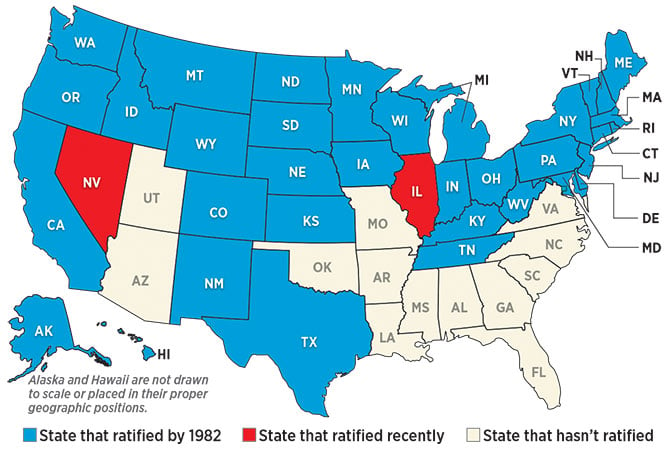
Elissa Malcohn
This ’70s-era pin urged passage of the ERA.
After decades on the shelf, the Equal Rights Amendment (ERA)—a proposed addition to the U.S. Constitution—is back in the news. In the 1970s and early ’80s, women’s rights activists tried to win support for the measure, which would guarantee equal treatment of men and women.
The push for the amendment began in a time when discrimination against women was widespread. American women were kept out of many prestigious jobs and were often denied bank loans to buy a house or a car.
Responding to the activists’ outcry, Congress approved the ERA in 1972. It later set a 10-year deadline for it to be
Or did it?
In March 2017 and May 2018, Nevada and Illinois became the 36th and 37th states, respectively, to ratify the ERA. This means that only one more state needs to approve it to meet the constitutional requirement of 38—and likely set up a legal battle over whether the amendment can be resurrected.
What exactly is the ERA, and why is it such a hot-button topic? Read on to learn more.



